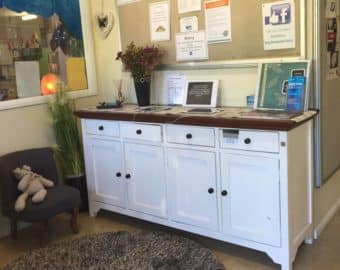Written by Carol Booth
All images provided by Carol
Long before I’d read Loris Malaguzzi’s words about the environment being the third teacher I had an understanding of this concept…
As a child of the 60’s and a parent of the early 90’s my cousins and I and later my children and I were trusted to entertain ourselves without a lot of unnecessary, closed ended toys…we explored outside and climbed trees to pick fresh mangoes, luscious and ready to eat, we swam in waterholes, played in haystacks, dammed creeks, made fantastic botanical potions, did giant chalk murals, discovered scurrying mini beasts. Were sometimes surprised by goannas and pythons, played dress ups with loyal boxer dogs, went on adventures with border collies, got chased by turkeys, collected eggs from skydiving chickens, cuddled squealing piglets, milked cows and played with lots of kittens and we built magical forts from stuff out of the shed. While inside we helped make doll clothes, we did woodwork to make a doll house, we enjoyed reading and construction with blocks. We also learned new skills side by side with parents and relatives including gardening, turf and slate laying, cementing, cooking and fence painting…little did we realise that while doing these things we were being exposed to STEM, building our knowledge of the world and our capabilities, being exposed to sustainable practices and developing an understanding of the connectedness between people, plants and creatures.
We were BELONGING, BEING and BECOMING!

In its stead was purpose built plastic-made-safe versions of real tools and controlled versions of explorations that we had experienced first hand were now set up on tables. Quality Area 3 of our NQS is all about the environment, indoors and out as it is such a huge influence on our practice as Educators. Our environments have the capacity to enhance or diminish child and educator wellbeing, behaviour, inclusion, cognition, language development and so much more. Our environment can project gender stereotypes or let gender expression be explored free from rigid expectations.
Our environments are essentially our plan too, as we have reflected on our knowledge of the children’s interests, coupled with our knowledge of child development and chosen the layout and content with intention. Imagine a space where educators and children enjoy coming each day, where all children and adults are catered for, where the resources are offered to enhance thinking even in the way they are presented (do I use two hands or one hand to carry this, can I do this myself or will I ask for help) where the environment has been so thoughtfully and carefully planned that there’s embedded sensory exploration from the twirling, reflective hanging objects to slubby sofa throws and silky, sequinned cushions. Where all children are invited to play. There’s cozy places to sit, moveable items to challenge and
the furniture tells the story of the many children and educators who have used this space before. Outside there’s flowers to pick, echoes to find, water to pour and splash, mud to make and clouds to watch scurry across the sky.
You can feel the wind or the warmth on your face, you can watch your shadow follow and jump, you can chase bubbles or you can sit quietly and listen for birdsong or the whisper of trees telling secrets. Contrast this with a visually busy and noisy environment that has designated spaces to use toys, there’s no comfy spots to curl up with a book, no chance to find ants or beetles to observe, no chance to see the sky or experience the excitement of changing weather, no Autumn leaves to find and everyone must always go down the slide instead of trying to go up! This second space may not have factored in children who may have extra needs for mobility, it hasn’t accommodated the educator who finds it difficult to sit on the floor or the sensory seeking child. There are limited natural surfaces for tiny fingers to explore, no perfume from plants, no sounds from nature. Children in this space may flit from activity to activity and not fully engage with anything or each other.

I’m so happy to see that just like velour (hehehe) everything old is new again and we are embracing risky play, using real tools and exploring the natural environment.








